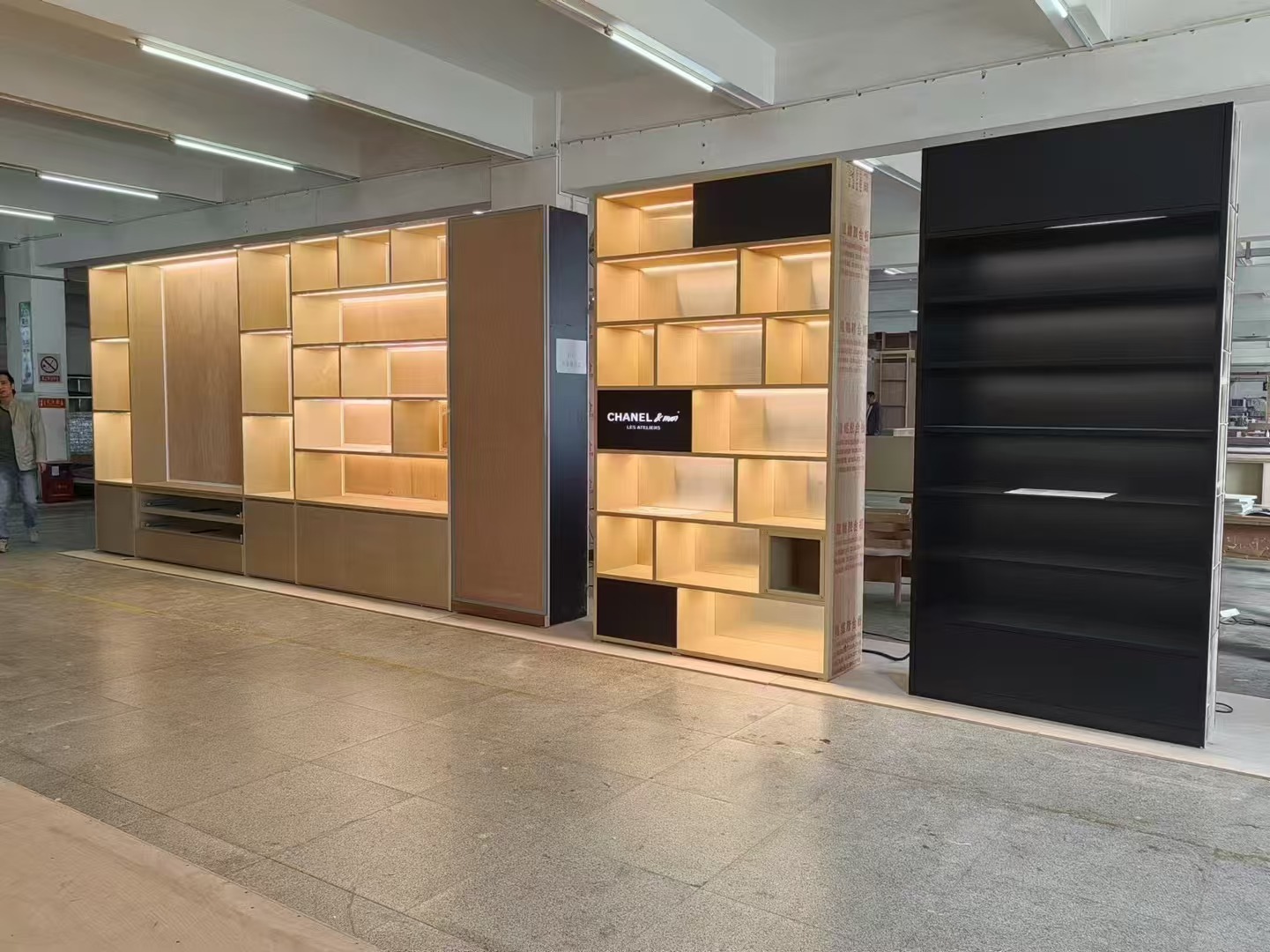What Does Load-Bearing Really Mean?
In shopfitting, “load-bearing” refers to how much weight a structure—like a display table, wall unit, or shelving system—can safely support. Every display has a maximum capacity based on its material and structural design. Exceeding that limit may cause sagging, warping, or even collapse.
In simple terms: think of a shelf as a bridge. The more evenly you distribute the weight across it, the safer it stays. But if the structure wasn’t built to carry that much weight in the first place, no amount of careful placement will help.
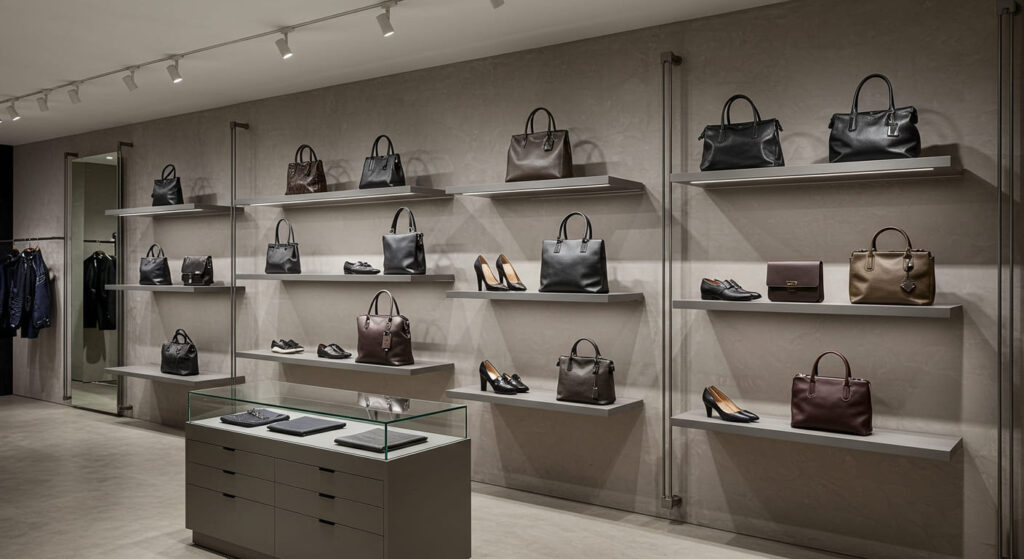
Why It Matters in Shopfitting
Retail fixtures don’t just need to look good—they also need to perform under pressure. Imagine a cosmetics display that starts to bow because it wasn’t reinforced properly, or a luxury handbag shelf that shifts over time from uneven loading. The result is not only dangerous but can harm your brand image.
From a production standpoint, knowing load requirements up front helps suppliers determine material thickness, internal reinforcements, and fixing methods. Especially for heavy merchandise like wine bottles or electronics, structural design is as critical as aesthetics.
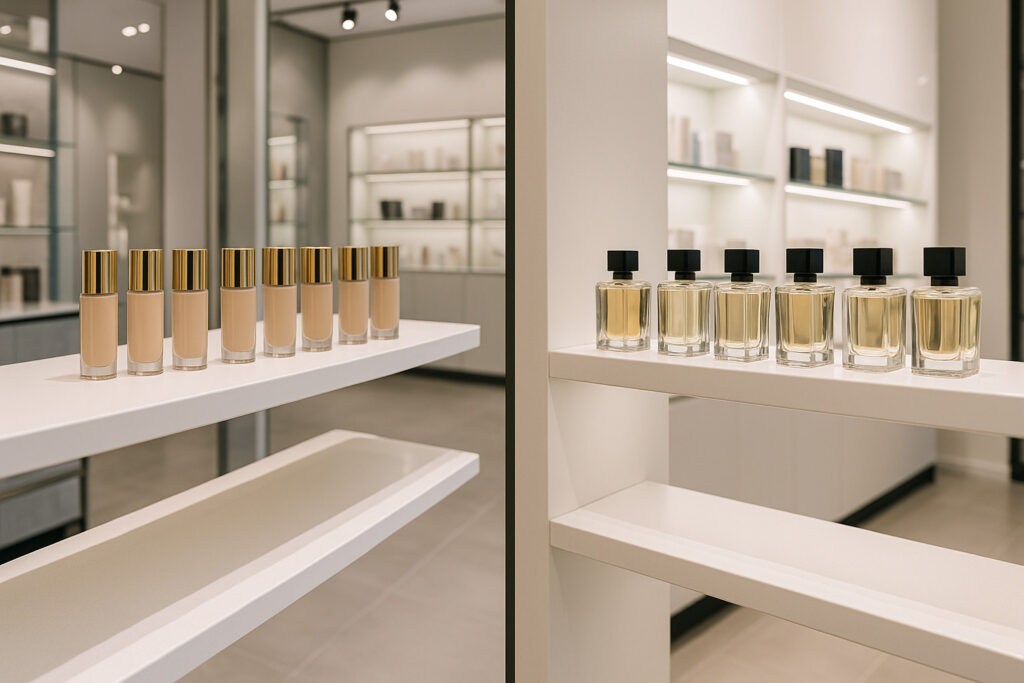
Key Factors That Affect Load-Bearing Performance
To ensure reliability, shopfitting manufacturers consider several structural aspects:
- Material Strength: MDF, plywood, solid wood, metal, and stone each have different weight tolerances. For example, MDF can carry less load than solid birch wood of the same size.
- Span Length: The wider a shelf or counter spans between supports, the more likely it is to sag. That’s why long shelving often includes hidden support bars or intermediate brackets.
- Joinery and Fastening: Weak joints or poor hardware can undermine otherwise strong materials. Reinforced corners, dowels, bolts, and metal inserts improve holding strength significantly.
- Mounting Method: Wall-mounted units rely on the wall’s strength and the type of fixings used. A plasterboard wall will require different anchors than a concrete one.
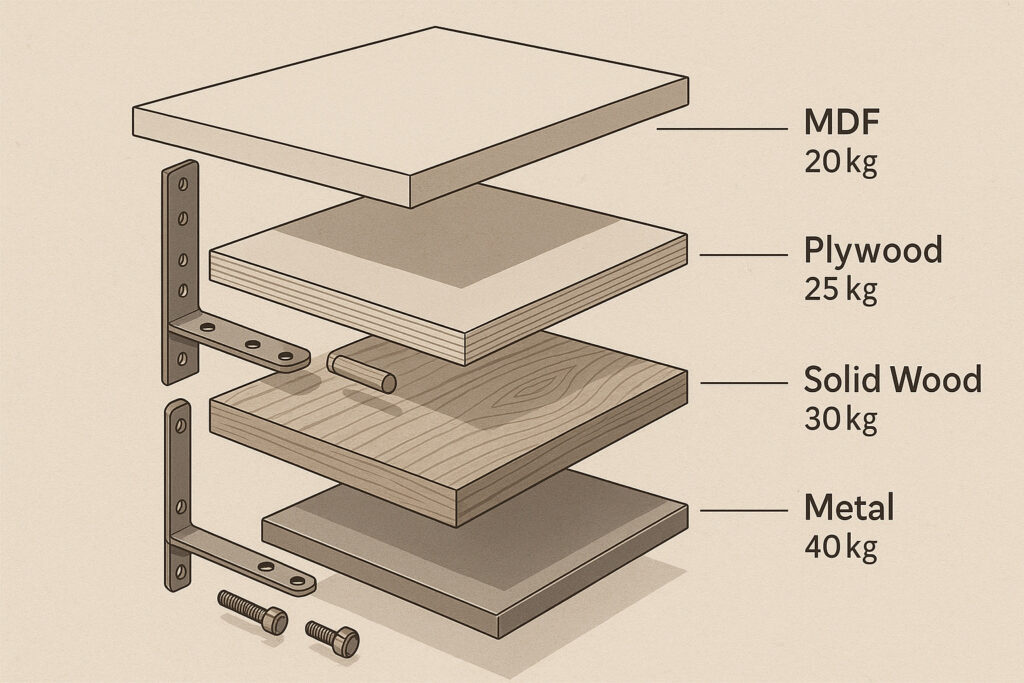
Designing with Load in Mind
Planning for load-bearing starts in the design phase. Clients should share how they plan to use the fixture—what will go on it, how often it will be moved, whether customers might lean on it, and so on.
At WeiLin, we often receive display blueprints without mention of weight expectations. In these cases, we proactively raise the topic, especially for custom designs. Even the shape of a display affects strength: for instance, adding curves or open shelving reduces the material’s structural continuity, requiring reinforcements.
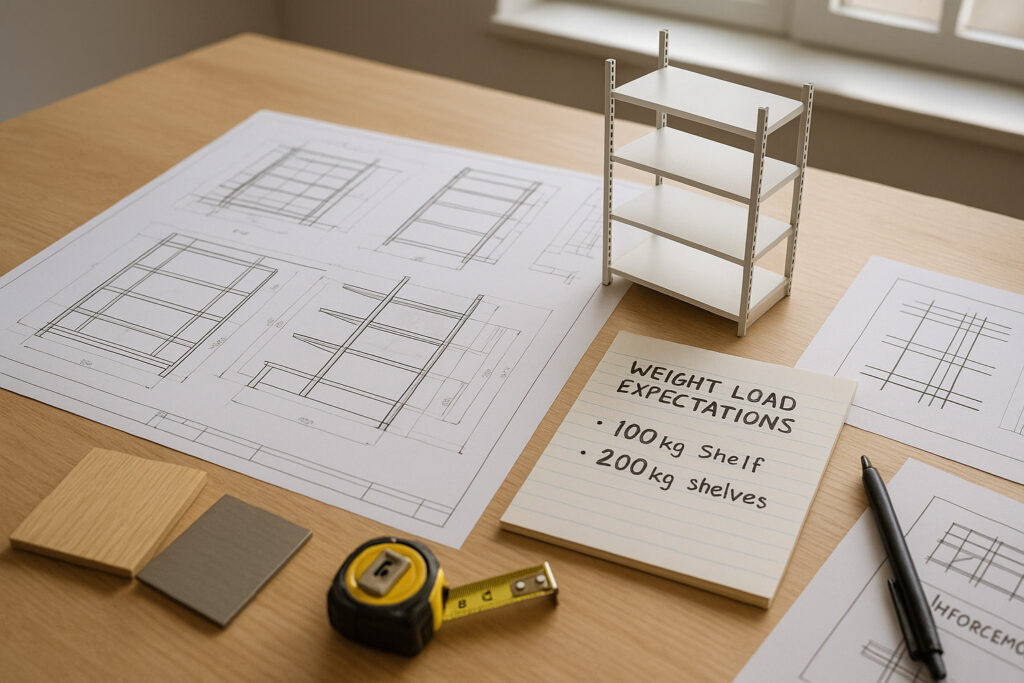
Hidden Reinforcements: Strength Behind the Aesthetic
In high-end retail, visual lightness is often a goal. Stone-like surfaces, thin profiles, and floating elements are popular—but these need internal support to maintain stability. Reinforcing frames or embedding metal tubes inside wood components are common techniques we use to preserve both function and form.
Understanding what lies beneath the surface ensures the fixture not only looks luxurious but lasts through daily use.
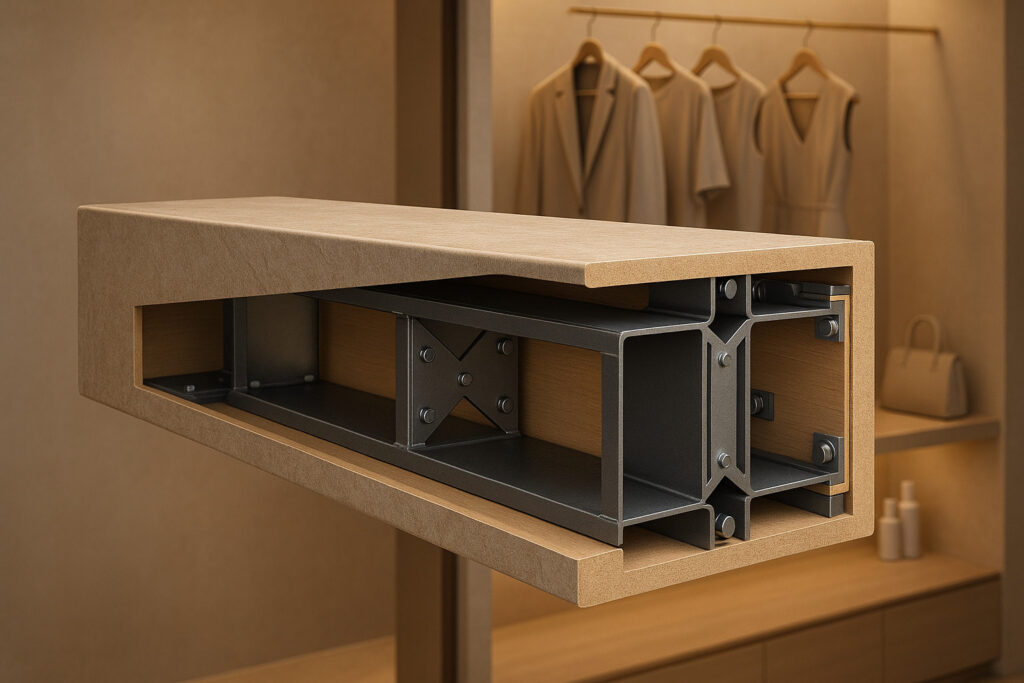
Signs of Poor Load-Bearing Design
- Sagging shelves
- Cracks near joints
- Loosening of wall fixtures
- Bouncing or shaking when touched
Spotting these early can help prevent costly replacements or safety risks.
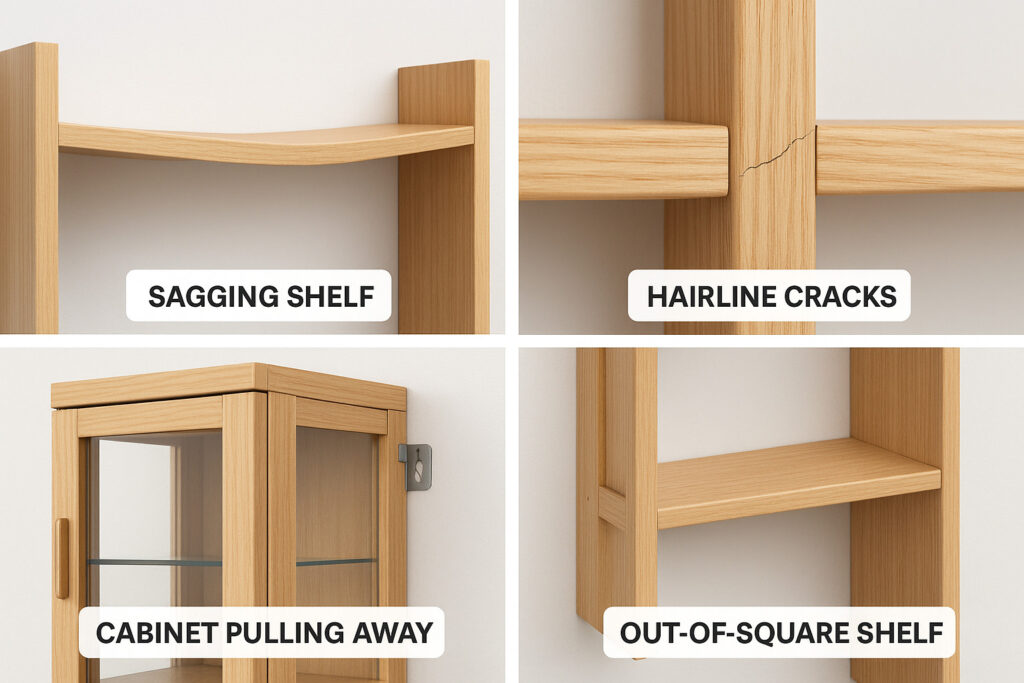
Closing Thoughts
Load-bearing capability isn’t just an engineering term—it’s a real-world concern for anyone opening or renovating a store. Whether you’re displaying perfume bottles, shoes, or luxury watches, your fixtures must not only complement your brand, but support it—literally.
Working with a knowledgeable shopfitting supplier ensures your store environment remains safe, functional, and long-lasting. Asking the right questions about load now saves you problems down the road.
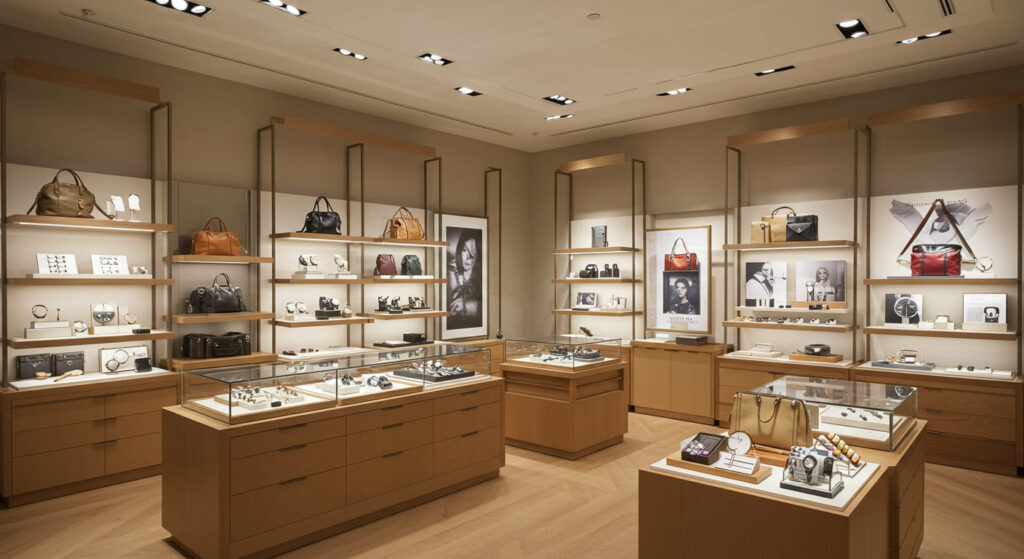
Suggested FAQ Schema
It refers to the maximum weight a fixture can safely support without bending or breaking.
A professional supplier will calculate this based on your fixture size, materials, and intended use.
Metal, hardwood, and engineered woods with reinforcements are commonly used.
Yes. With internal reinforcements and clever construction, both can be achieved.
Sagging, wobbling, or cracks near joints are common warning signs.


